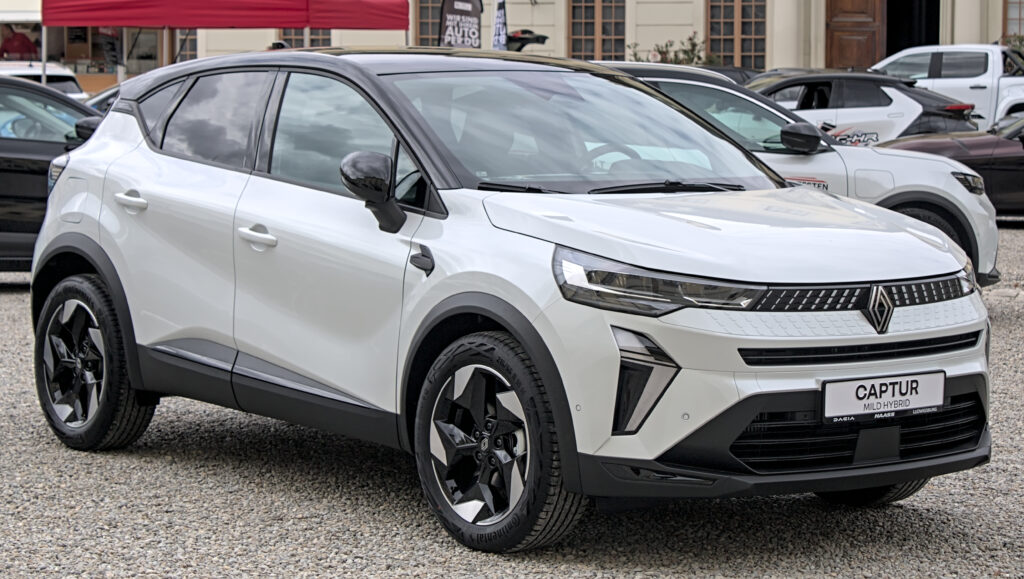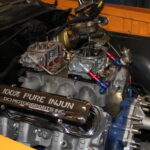
Renault Captur Handbrake Adjustment

- Understanding the Importance of a Properly Adjusted Handbrake
- How the Renault Captur Handbrake System Works
- Symptoms Your Renault Captur Needs Handbrake Adjustment
- Safety Precautions Before Adjusting the Handbrake
- Tools You’ll Need for the Adjustment
- Accessing the Renault Captur Handbrake Adjustment Point
- Adjusting the Handbrake on a Renault Captur
- Adjusting the Rear Drums or Calipers (If Needed)
- Why Handbrake Cable Stretch Occurs
- Electric Parking Brake Note (Modern Captur Models)
- Handbrake Adjustment Interval Recommendations
- Cost of Handbrake Adjustment in the UK
- Common Mistakes When Adjusting a Captur Handbrake
- Post-Adjustment Testing Checklist
- When to Replace the Handbrake Cable Entirely
- Final Thoughts
Understanding the Importance of a Properly Adjusted Handbrake
When we talk about safety, the handbrake on a Renault Captur isn’t just a lever you pull at traffic lights—it’s a critical backup system that stabilises the vehicle, secures it on inclines, and prevents unexpected rollaways. A poorly adjusted handbrake can feel loose, click too many times, or fail to hold the car firmly. That’s why mastering the handbrake adjustment process isn’t only beneficial for maintenance—it’s peace of mind.
How the Renault Captur Handbrake System Works
To adjust the handbrake confidently, we first need clarity on how the system operates.
Cable-Operated Parking Brake
Most Renault Captur models (especially 2013–2019) use a traditional cable-operated handbrake. When we pull the lever:
- The lever counters tension.
- Cables pull rear brake mechanisms.
- Rear calipers/drums lock the wheels.
- The car remains stationary.
Drum-in-Disc Setup in Some Models
Depending on the version, your Captur may feature:
- Rear drum brakes integrated into the hub
- Caliper-mounted mechanisms
- Twin-cable design attached to a compensator
Regardless of setup, handbrake "stretch" over time is normal and requires periodic adjustment.
Symptoms Your Renault Captur Needs Handbrake Adjustment
A misadjusted handbrake rarely hides its symptoms. Common signs include:
Excessive Lever Travel
If your handbrake clicks more than 6–8 times, it’s too loose.
Car Rolling on Inclines
When the Captur moves slightly after engaging the brake, tension needs tightening.
Uneven Braking
You might feel one side locking harder than the other.
Weak Holding Power
Especially noticeable on steep driveways or when parking on a hill.
MOT Failure Warning
UK MOT tests are strict about parking brake efficiency; a weak handbrake is a common failure point.
Safety Precautions Before Adjusting the Handbrake
Before we get our hands dirty, let’s establish a few non-negotiables:
- Park on level ground.
- Engage first gear (manual) or ‘P’ (automatic).
- Use wheel chocks.
- Ensure the vehicle is cool—brakes heat fast.
- Wear gloves and eye protection.
We do not want to risk crushing injuries or burns when a simple precaution could save us.
Tools You’ll Need for the Adjustment
Keep these essentials close to avoid scrambling mid-repair:
- Flathead screwdriver
- 10mm and 13mm socket set
- Torx bits (commonly T20 or T25)
- Trim removal tool
- Ratchet wrench
- Jack and axle stands
- Work light
With this setup, we’re ready to tackle the job safely and efficiently.
Accessing the Renault Captur Handbrake Adjustment Point
Unlike some vehicles where the handbrake adjusts automatically, the Captur requires manual access. The primary adjustment mechanism sits beneath the centre console, under the handbrake lever.
Step-by-Step: Removing the Centre Console Cover
Step 1 — Slide Seats Back
Give yourself enough room to manoeuvre.
Step 2 — Remove Rubber Mat
Lift the mat under the handbrake lever.
Step 3 — Undo Torx Screws
Typically two screws hold the console’s top section.
Step 4 — Remove Side Covers
Use a plastic trim tool to avoid scratching the interior.
You may be interested in reading Renault Captur Towing Capacity: The Complete UK Guide (Braked & Unbraked Weights for Every Engine and Trim)
Renault Captur Towing Capacity: The Complete UK Guide (Braked & Unbraked Weights for Every Engine and Trim)Step 5 — Lift Console Gently
You should now see the handbrake adjustment nut and compensator bar.
The view might feel cramped, but the mechanism is accessible once the console is lifted.
Adjusting the Handbrake on a Renault Captur
Here’s where the magic happens. With the mechanism exposed, follow this sequence:
1. Loosen the Locking Nut
There are usually two nuts:
- A locking nut
- An adjustment nut
Loosen the locking nut first using a 10mm/13mm socket.
2. Turn the Adjustment Nut
Rotate clockwise to tighten cable tension.
Keep checking the lever travel—your target is 6 clicks for ideal resistance.
3. Check Rear Wheel Movement
Jack up the rear wheels:
- Spin wheels by hand.
- With handbrake lowered = wheels should spin freely.
- With handbrake lifted = wheels must lock firmly.
If one wheel spins more freely than the other, uneven tension may indicate cable wear.
4. Recheck Tension After Lowering Vehicle
Brakes sometimes settle when weight shifts onto the wheels.
5. Tighten Locking Nut
Secure the setting by tightening the locking nut against the adjuster.
6. Reassemble Centre Console
Reverse the removal steps.
Once completed, the handbrake should feel firm, responsive, and confidence-boosting.
Adjusting the Rear Drums or Calipers (If Needed)
Sometimes the issue isn’t the cable—but the rear brakes.
Drum Brake Adjustment
Captur models with drum brakes have auto-adjusters, but they can stick.
Signs include:
- Weak handbrake despite tight cable
- Grinding noises
- Uneven braking
Manually adjusting them requires removing the drum and:
- Cleaning dust
- Adjusting the star wheel
- Ensuring even shoe expansion
Caliper Handbrake Mechanisms
Rear disc models can suffer:
- Seized handbrake arms
- Worn pads
- Corroded pistons
Lubrication and caliper servicing may be necessary.
Why Handbrake Cable Stretch Occurs
We often forget the handbrake is a mechanical system subject to wear. Stretch happens due to:
You may be interested in reading Renault Captur Towing Capacity: The Complete UK Guide (Braked & Unbraked Weights for Every Engine and Trim)
Renault Captur Towing Capacity: The Complete UK Guide (Braked & Unbraked Weights for Every Engine and Trim) Renault Captur Engine Oil Guide: The Complete UK-Focused Handbook for Every Model and Year
Renault Captur Engine Oil Guide: The Complete UK-Focused Handbook for Every Model and Year- Temperature fluctuations
- Material fatigue
- Corrosion
- Constant pulling force
- Minimal lubrication
Understanding this helps us appreciate why adjustments are a normal maintenance task, not a fault.
Electric Parking Brake Note (Modern Captur Models)
2020+ Captur versions often have an electronic parking brake (EPB). These cannot be manually adjusted via cable tension. Instead:
- Diagnostics tools set service mode.
- Calibrations run via software.
- Rear calipers self-adjust automatically.
If you own a second-generation Captur, handbrake adjustment involves a garage-level process.
Handbrake Adjustment Interval Recommendations
Though Renault doesn’t specify a strict interval, UK mechanics generally recommend:
- Check every 12 months
- Adjust every 20,000–30,000 miles
- Inspect before MOT test
- Recheck after brake service
Consistency prevents sudden efficiency drops.
Cost of Handbrake Adjustment in the UK
Here’s a quick breakdown of real-world pricing:
Independent Garage
- £25–£45 for simple adjustment
- £60–£100 if calipers need cleaning
Main Dealer
- £70–£120 depending on labour rate
DIY
- Free—except your time and tools
- Perfect for enthusiasts improving their mechanical confidence
Common Mistakes When Adjusting a Captur Handbrake
Even experienced DIY mechanics slip up. Watch out for:
Over-tightening the Cable
This causes:
- Drag on rear wheels
- Excess heat
- Premature pad/shoe wear
Ignoring Rear Brake Condition
Adjusting the cable won’t fix worn brake shoes or seized caliper arms.
Failing to Check Both Sides
Unbalanced braking is dangerous and can cause MOT failure.
Skipping the Locking Nut
This leads to rapid loosening and a sloppy lever feel within days.
Post-Adjustment Testing Checklist
Before you hit the road, confirm:
- Lever travel is between 4–6 clicks
- Parking on a hill feels secure
- The Captur doesn’t roll backward
- No burning smell from rear brakes
- Rear wheels don’t drag when lifted
If any test fails, revisit the adjustment.
When to Replace the Handbrake Cable Entirely
Adjustment isn’t always enough. Replace the cable when:
- It’s visibly frayed
- The rubber sheath is cracked
- Cable is seized or rusted
- Uneven tension continues after adjustment
A typical replacement costs £80–£160 including parts and labour.
Final Thoughts
Adjusting the Renault Captur handbrake is a manageable job for those comfortable with basic mechanics. With patience, care, and the right tools, we can restore firm, reliable parking brake performance and keep the Captur feeling safe and predictable. Consistent maintenance also ensures smoother MOT inspections, longer brake life, and greater peace of mind every time we park on an incline.
{finish}
FAQs
1. How many clicks should a Renault Captur handbrake have?
Ideally 4–6 clicks for a firm, secure feel.
2. Why is my handbrake still weak after tightening the cable?
Brake shoes, pads, or caliper mechanisms may need servicing.
3. Can a handbrake adjustment fix MOT failure?
Yes—if the issue is cable tension. Worn components require repair.
You may be interested in reading Renault Captur Towing Capacity: The Complete UK Guide (Braked & Unbraked Weights for Every Engine and Trim)
Renault Captur Towing Capacity: The Complete UK Guide (Braked & Unbraked Weights for Every Engine and Trim) Renault Captur Engine Oil Guide: The Complete UK-Focused Handbook for Every Model and Year
Renault Captur Engine Oil Guide: The Complete UK-Focused Handbook for Every Model and Year Renault Captur Fuel Tank Capacity: The Complete, High-Detail Guide
Renault Captur Fuel Tank Capacity: The Complete, High-Detail Guide4. Does the new Captur with electric parking brake need manual adjustment?
No. EPB systems self-adjust and require diagnostic calibration.
5. How long does a handbrake cable last?
Typically 5–10 years, depending on climate and usage.
If you want to know other articles similar to Renault Captur Handbrake Adjustment you can visit the category Service and Parts.
Deja una respuesta




More content of your interest